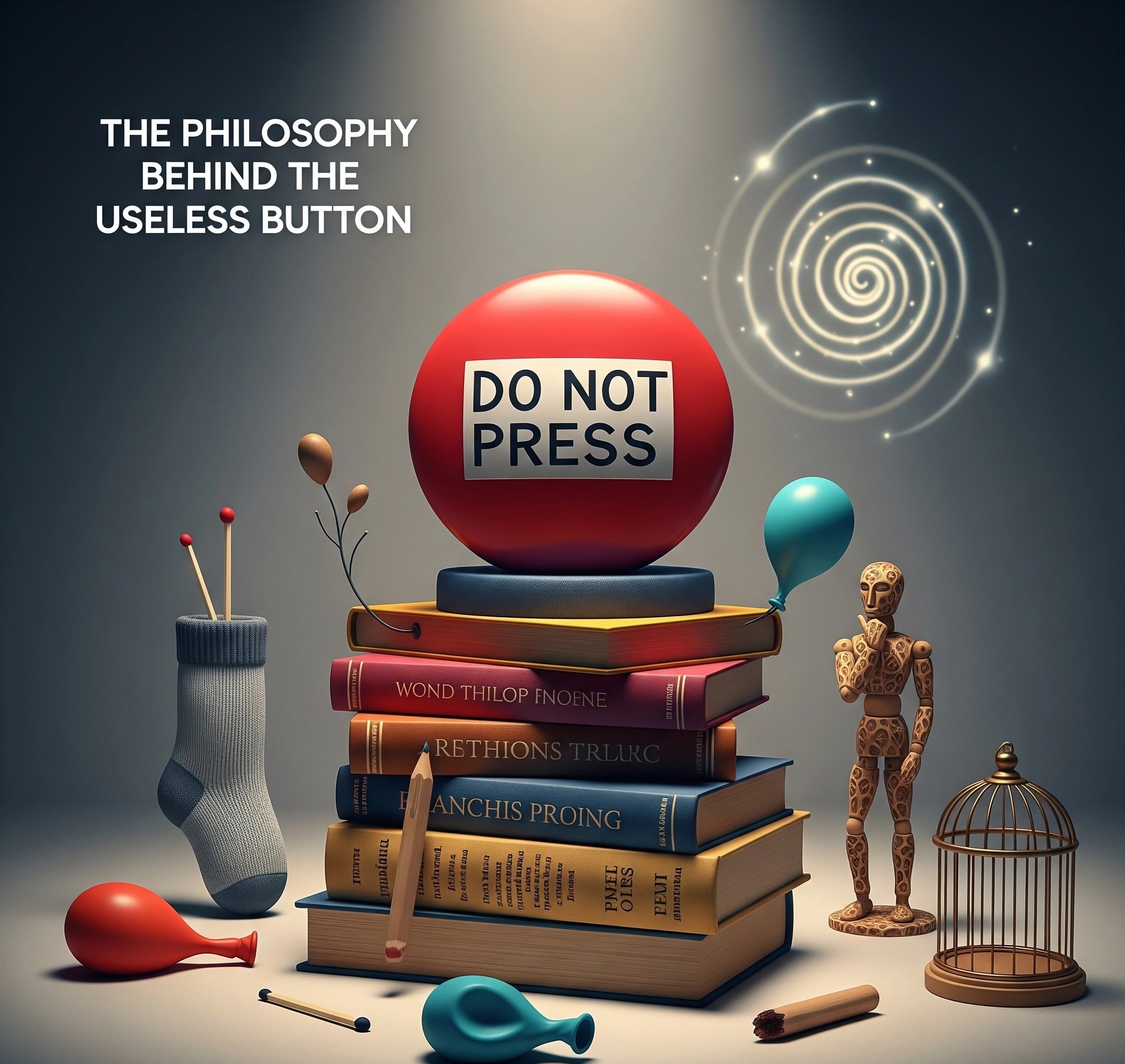The Philosophy Behind the Useless Button

In a world driven by productivity, efficiency, and results, the concept of a “useless button” might seem absurd. But therein lies its charm. The useless button challenges our obsession with function and invites us into a space of playful rebellion.
Many users report that interacting with the Useless Button feels oddly therapeutic. It’s a digital sigh, a moment of defiance in a world that demands constant output. Perhaps the lack of purpose is what gives it its power.
The concept of play for the sake of play is deeply rooted in human behavior. From children stacking blocks only to knock them over, to adults engaging in complex board games, purposeless interaction fosters creativity and joy. And just like those toys and games, the Useless Button taps into that inner child—the part of us that remembers what it was like to play without agenda, to explore without consequence.
Purposefully Pointless
Technically speaking, the Useless Button is a marvel of intentional pointlessness. Its backend may be simple—perhaps just a click counter, an animation, or even nothing at all—but its psychological impact is profound. It subverts expectations and sparks curiosity. In an age where every button opens a new tab, performs a task, or triggers a workflow, one that does nothing is almost radical.
Why would anyone want to interact with something that does nothing?
Because it’s not really about the nothing. It’s about the freedom from expectation. Most apps, websites, and tools are built to capture attention, data, money, or time. The Useless Button captures none of those. It asks nothing from you. There’s no login, no reward, no leaderboard. Just a button—and you.
And that’s exactly the point.
A Brief History of Doing Nothing
The idea of useless machines isn't new. In fact, Claude Shannon—the father of information theory—once created a “useless machine” in the 1950s: a box with a single switch that, when flipped on, activated a mechanical hand that reached out, turned the switch off, and then retreated into the box. It was an exercise in engineering irony, and it delighted people.
That same spirit of gentle rebellion lives on in the Useless Button. It reminds us that doing things just because we can, and not because we must, is part of what makes us human.
The Button as Meditation
Critics argue that tools like the Useless Button are distractions. But in a hyper-optimized world, distractions can be acts of rebellion. They allow for moments of pause, humor, and even mindfulness. Clicking a button that does nothing is a form of expression. It’s saying, “I don’t have to justify every action.” In that way, it aligns with minimalist and Zen philosophies that embrace presence over productivity.
Consider this: what if the point of the button isn’t nothing, but stillness? A way to interrupt the relentless scroll, the constant multitasking, the urge to always be “doing.” In that sense, the Useless Button is more than a novelty—it’s a tool for self-awareness. It offers no guidance, no task list, no gamification. It simply is. And when you click it, so are you.
Design That Defies Utility
From a design standpoint, making something ‘useless’ is harder than it sounds. The button must do just enough to engage users, while resisting the temptation to become “useful.” That balance is the art behind the tool.
There are countless examples of digital tools that started as fun, quirky, or humorous—and eventually became bloated with features. The Useless Button refuses to evolve. And in that refusal lies its strength.
It invites people to interact with it, not because they need to, but because they want to. It makes you smile. It makes you think. It makes you ask, “Why am I still clicking this?”—and then click again anyway.
It’s a minimalist’s dream: a single UI element, no menus, no settings, no goal. And yet, somehow, it's deeply engaging.
Micro-joy in the Digital Age
In an increasingly complex digital world, where AI tools complete our sentences and algorithms anticipate our desires, something like the Useless Button feels oddly comforting. It offers micro-joy—a tiny moment of unexpected delight. Like finding a coin on the sidewalk or hearing your favorite song by chance, clicking the button delivers a small emotional reward without expectation.
It’s not dopamine by design. It’s joy by accident.
This kind of serendipity is becoming rare. We’re always on the grid, always in sync, always connected. But the Useless Button doesn’t sync with anything. It doesn’t update. It doesn’t track. It doesn’t notify. It exists outside of that logic—and that makes it feel, paradoxically, refreshing.
The Future of Playful Tech
Could the future of technology involve more useless things? Possibly. As burnout rises and attention spans shrink, more people are looking for ways to unplug without disappearing completely. Tools like the Useless Button provide a middle ground. They’re not addictive, not harmful, not demanding. They are simply there, waiting for interaction with no strings attached.
Developers and designers are starting to recognize that not everything needs a purpose. Sometimes, the best kind of innovation is the kind that doesn’t try to solve a problem, but simply exists to make someone smile.
Final Click
Ultimately, the Useless Button is not about doing nothing. It’s about doing something that doesn’t need to mean anything. And in that, it offers a unique kind of freedom. A space where being is enough.